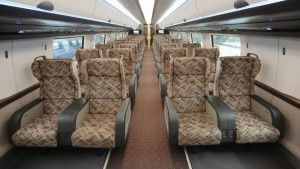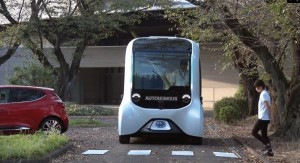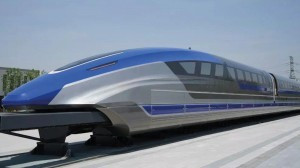What will move us next*
Chinese maglev train makes short-haul flights superfluous
At the end of July, the world's fastest magnetic levitation train from China Railroad Corporation (CRRC) left the factory halls in Qingdao, a coastal city in eastern China with a population of 10 million(Fig. 1).
The magnetic levitation train, also known as Maglev, will connect the cities of Wuhan and Guangzhou, 1000 km apart, in just a few years. With an initial speed of 620 km/h, this will make short and medium-haul air travel with highCO2 emissions superfluous.
Missed opportunity = missed opportunity
Do you remember the pioneering German development, the Transrapid magnetic levitation train developed by Siemens and Thyssenkrupp(Fig. 2)?
21 years ago, the author was already traveling at 420 km/h past undisturbed grazing cows on the test track in Emsland, because nothing more than a hissing noise could be heard. With government support, German companies had developed a piece of the future ready for series production. What was missing was the state will and the vision to build the first commercial section of track in Germany.
 Fig. 4: The futuristic cockpit of the 600 km/h China Railroad maglev train Image: CRRCChina, not Germany was prepared to build the first 30 km long Transrapid line between Pudong Airport and Longyang Road Station in Shanghai, supplied by Siemens and Thyssenkrupp and using German patents.
Fig. 4: The futuristic cockpit of the 600 km/h China Railroad maglev train Image: CRRCChina, not Germany was prepared to build the first 30 km long Transrapid line between Pudong Airport and Longyang Road Station in Shanghai, supplied by Siemens and Thyssenkrupp and using German patents.
With much fanfare, German Chancellor Gerhard Schröder and Chinese Prime Minister Zhu Rongji inaugurated the world's first commercial Transrapid line in Shanghai on December 30, 2002. The author wrote 19 years ago in this column(PLUS 12-2002): "In a few years, we will have to buy back German patents for a lot of money."
Chinese rail technology has long since overtaken us, as have the Japanese and French. Germany develops and others implement it, Germany lacks courage - others use our knowledge.
Premiere of the world's first maglev prototype
 Fig. 5: The interior of the maglev train should be comfortable but conventional Image: CRRCTheworld's first prototype of a high-speed maglev train with superconducting magnets and the associated test track were unveiled on January 13, 2021 at Southwest Jiaotong University in Chengdu.
Fig. 5: The interior of the maglev train should be comfortable but conventional Image: CRRCTheworld's first prototype of a high-speed maglev train with superconducting magnets and the associated test track were unveiled on January 13, 2021 at Southwest Jiaotong University in Chengdu.
The prototype incorporates many new technologies, such as a lightweight carbon fiber body, an aerodynamic locomotive shape with low drag and superconducting magnets with large carrying capacity. With a design speed of 620 km/h, the vehicle is expected to set a new speed record for land transportation. In the future, it will also use low-vacuum tube (tunnel) technology, based on the Hyperloop principle. Southwest Jiaotong University is the birthplace of high-temperature superconductor maglev technology.
The train is equipped with Automatic Train Operation (ATO) with automation level 3. This means that it can run fully automatically, but train attendants will ride along for safety reasons. The train meets the highest safety requirement of SIL4.
The drive with superconducting magnets
The Transrapid is driven by a linear motor (more precisely: synchronous stator linear motor). A traveling magnetic field is generated in the stator coils, which are mounted in stacks of three along the track, which propagates along the track and accelerates the train.
A superconducting magnet is an electromagnet consisting of coils made of superconducting conductor material. In the superconducting state, such a material no longer has any measurable electrical resistance and can therefore conduct much higher electrical currents than normal wire. As the resulting magnetic field is directly linked to the generated current, very high magnetic fields can be generated with such superconducting magnets.
 Fig. 6: View of the cockpit. The aim is to glide at speeds of up to 1000 km/h on superconducting magnets in vacuum tubes such as the Hyperloop
Fig. 6: View of the cockpit. The aim is to glide at speeds of up to 1000 km/h on superconducting magnets in vacuum tubes such as the Hyperloop
Mobility as a service
 Fig. 7: Toyota's self-driving robo-taxi, used at the 2021 Olympics, range 130 km, speed 32 km/h Image:At this year's Olympics,ToyotaToyotais showing how self-driving transportation systems can be used to implement the mobility of the future(Fig. 7). Through its programs and in partnership with various mobility services companies, Toyota plans to use a range of 'Mobility as a Service (MaaS) platforms' to support and accelerate the development and deployment of automated driving technologies.
Fig. 7: Toyota's self-driving robo-taxi, used at the 2021 Olympics, range 130 km, speed 32 km/h Image:At this year's Olympics,ToyotaToyotais showing how self-driving transportation systems can be used to implement the mobility of the future(Fig. 7). Through its programs and in partnership with various mobility services companies, Toyota plans to use a range of 'Mobility as a Service (MaaS) platforms' to support and accelerate the development and deployment of automated driving technologies.
In addition, as MaaS vehicles have a longer service life than privately owned vehicles, they offer the opportunity to collect large amounts of experience data to improve automated driving for all vehicles.
Toyota believes that using highly automated vehicles to support MaaS can help reduce the cost per passenger kilometer, increasing consumer demand and creating a virtuous cycle of affordable mobility, safety and convenience.
The open, flexible platform can be easily customized to support a range of applications, including ride-haring, delivery and retail. This includes coordination with partners such as Amazon, DiDi, Mazda, Pizza Hut and Uber.
A positive side effect of the corona pandemic is the greatly reduced human contact when transporting people or delivering goods and food.
In a nutshell:
- On December 30, 2002, German Chancellor Gerhard Schröder and Chinese Prime Minister Zhu Rongji inaugurated the world's first commercial Transrapid line in Shanghai, built by Siemens and Thyssenkrupp. The 'price' was the loss of almost all patents and source codes.
- The world's first prototype of a high-speed maglev train and its test track were unveiled on January 13, 2021 at Southwest Jiaotong University in Chengdu.
- The main innovation is superconducting magnets for the structure of the traveling field.
- The system will initially be capable of speeds of 620 km/h and will later be further developed to 1000 km/h. Low-vacuum tube (tunnel) technology based on the Hyperloop principle will be used here
- The 'Mobility as a Service (MaaS)' platform developed by Toyota is also being tested by other manufacturers. There are many opportunities here to take over driverless ride sharing, delivery of goods and retail deliveries with reduced transportation costs.
While Germany has been struggling for 11 years with the construction of the Stuttgart 21 railroad station and is currently laboriously ramping up Berlin's BER airport, fortunately in coronavirus austerity mode, other countries are developing the future. We need to think differently about the mobility of the future. Ministerial officials and public decision-makers are talking about the reactivation or construction of conventional rail lines of all kinds (DB, S-Bahn, U-Bahn, streetcar) with a time frame of 10 to 20 years, without taking into account new systems that are already being tested. Where are the future-oriented projects with autonomous means of transportation that have long been gathering experience from Singapore to Las Vegas in test operations for Google's Waymo and General Motors Cruise? Mass transportation on rails with self-driving local connecting transport. Without conceptual, holistic thinking and the courage to set the course for the future, we will continue to be increasingly overtaken by other countries.
I wish you the courage to set the course for the future.
Best regards
Hans-Joachim Friedrichkeit
contact
F
* "What will move us next" is the motto of the IAA MOBILITY in Munich in September 2021




